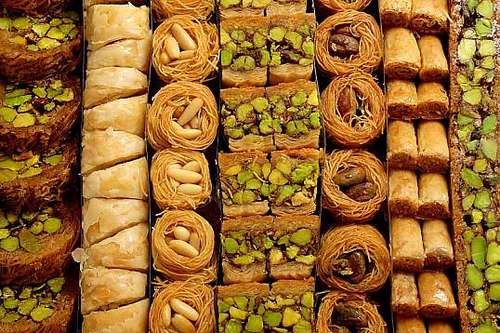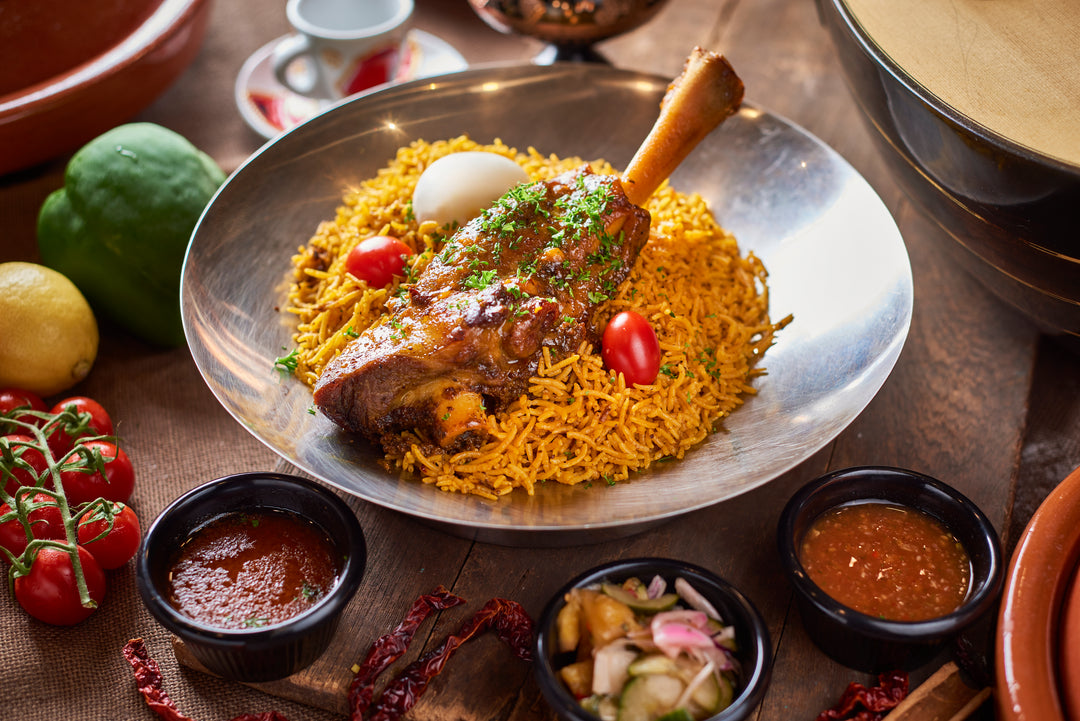Middle Eastern Desserts: A Symphony of Sweetness

Middle Eastern desserts are a captivating blend of rich flavors, delicate textures, and aromatic spices. From the iconic baklava to the lesser-known delights, these sweet treats offer a delightful conclusion to any meal. Let's embark on a journey through the world of Middle Eastern desserts.
The Art of Balance: Sweet and Savory Harmony
Middle Eastern desserts are renowned for their intricate balance of sweet and savory flavors. The use of aromatic spices, citrus notes, and rich textures creates a symphony on the palate. These desserts are often enjoyed with strong black coffee or tea, enhancing the overall taste experience.
Classic Middle Eastern Desserts
- Baklava: A masterpiece of pastry, baklava consists of layers of flaky phyllo dough filled with chopped nuts and drenched in sweet honey syrup. The crispy exterior and the rich, nutty filling create a truly indulgent experience.
- Kunafa: This decadent dessert features a crispy, buttery pastry filled with creamy cheese and drenched in sweet syrup. Often topped with pistachios, kunafa is a popular choice for celebrations.
- Basbousa: A moist semolina cake soaked in a sweet syrup, basbousa is a classic Middle Eastern dessert. Its simple yet satisfying flavor profile makes it a beloved treat.
- Maamoul: These delightful cookies are filled with dates, pistachios, or walnuts and shaped into intricate patterns. They are often enjoyed during festive occasions and Ramadan.
- Halva: A rich and dense sweet made from sesame seeds, tahini, or sunflower seeds, halva offers a unique texture and flavor. It can be enjoyed on its own or as a topping for ice cream or yogurt.
Exploring the Sweet Side of Ingredients
Middle Eastern desserts feature a unique combination of ingredients that contribute to their distinctive flavors and textures.
- Nuts: Almonds, pistachios, walnuts, and hazelnuts are essential components of many Middle Eastern desserts, providing richness and crunch.
- Spices: Cardamom, cinnamon, and saffron infuse desserts with warm and aromatic flavors.
- Sweeteners: Honey, date syrup, and rose water are commonly used as natural sweeteners, offering complex flavor profiles.
- Dairy: Milk, cream, and yogurt are used to create creamy and luscious textures in certain desserts.
Modern Twists on Classic Desserts
While traditional Middle Eastern desserts hold a special place in hearts, modern chefs are reimagining these classics with innovative twists.
- Deconstructed desserts: Reimagining classic desserts by presenting their components separately allows for a playful and interactive experience.
- Fusion desserts: Blending Middle Eastern flavors with Western techniques and ingredients creates exciting new taste sensations.
- Healthier options: Using alternative sweeteners and incorporating healthier ingredients without compromising taste.
Pairing Desserts with Beverages
The perfect pairing of dessert and beverage can elevate the overall dining experience.
- Strong black tea: The bold flavors of black tea complement the richness of many Middle Eastern desserts.
- Arabic coffee: A small cup of strong, aromatic coffee is the ideal companion for rich and decadent desserts.
- Rose water-infused milk: A refreshing and fragrant beverage that balances the sweetness of desserts.
Indulging in Middle Eastern desserts is a journey through a world of exquisite flavors and textures. From the iconic baklava to the modern reimaginations, these sweet treats offer a delightful conclusion to any meal.









